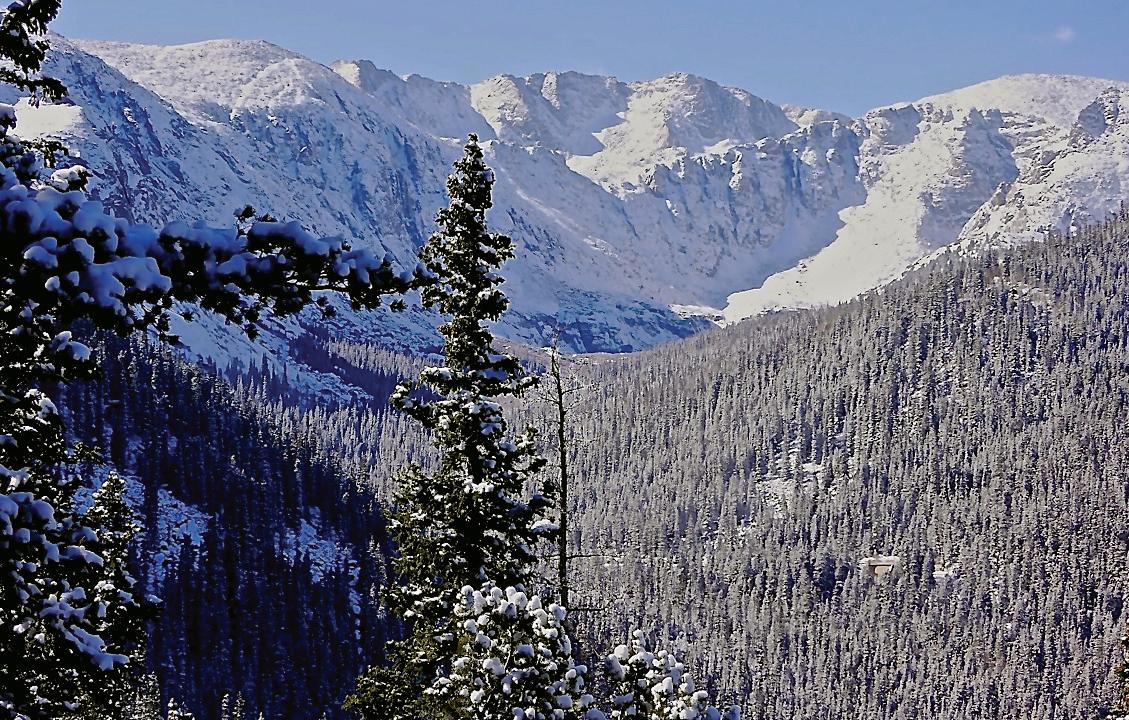
4 minute read
EARLY SEASON SNOW ADVENTURES
Two for the Road
A Couple Early Season High Altitude Skiing and Snowshoeing Adventures
By Alan Apt
View from the top of the Chicago Lakes Trail of the Mount Evans Massif. Alan Apt
IT IS THAT TIME OF THE YEAR when high altitude trails are turning white, and will stay snow covered until June. Trails above 10,000 feet are slippery enough to make cleats and poles necessary for traction. Above 11,000 feet, you can choose between using snowshoes, skis, or post holing. Post holing can mean suddenly plunging up to your thigh into snow that has soft spots. is is usually not entertaining, and can cause leg, hip, or back injuries. e prudent high altitude adventurer will avoid the plunge with the right equipment. If you decide on an early season ski, try to avoid rocks and stumps just below the surface with low speed route choices. e Colorado Avalanche Information Center has issued their rst warning about possible slab avalanches on high, steep terrain—above 30 degrees. eir rst reports started November 1, so visit https://avalanche.state.co.us/index.php for the conditions at your destination. Here are a couple of high-altitude trails that can o er early winter fun.
Chicago Lakes Trail is 9-mile trail starts at Echo Lake, below Mount Evans, and heads into the spectacular Mount Evans Wilderness Area. It is suitable for snowshoeing or backcountry skiing with deep snow; hiking is good in thin conditions. It is a short drive from Denver: take I-70 to the Mount Evans exit (#240), near Idaho Springs, and then drive 14 miles on CO 103 to the Echo Lake picnic area. Echo Lake is 10,600 feet, so the snow cover arrives early and stays late. From the picnic area the lakeside trail will take you west around the end of the lake. Enjoy the view of the Mount Evans massif from the lake. When you round the end of the lake and bear right uphill, you will see the sign for the Chicago Lakes Trail. e trail rolls over a small hill and descends. e descent requires intermediate ski skills. A stunning panorama greets you when you break out of the trees. e trail is narrow and has a 500-foot drop on the west side, making it a good idea to bring along a leash, if your dog joins you. Don’t use this trail if avalanche danger is high, because the side-slope above you on the left is steep. Early season, before major storms, is a good time to visit. e trail descends 500 feet to the Idaho Springs reservoir road. Turn left when you reach it, and you will climb slowly up to the reservoir. is is a good turnaround point for an easy outing. e trail continues south around the west side of the reservoir with spectacular views of the cli s above. e rocky trail slowly climbs southwest, above the sparkling riparian valley, rolling over small hills. e soaring ridgeline on the east looks ever
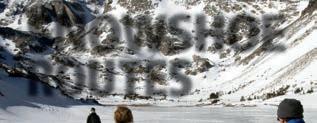
To order Alan Apt’s book Snowshoe Routes: Colorado’s Front Range, or any CMC Press title, visit our online store at http://www.cmc.org/Store, or we can take your order over the phone at 303-279-3080 (in Colorado) or toll free at 800-633-4417. CMC members receive a 20 percent discount on all CMC Press books.
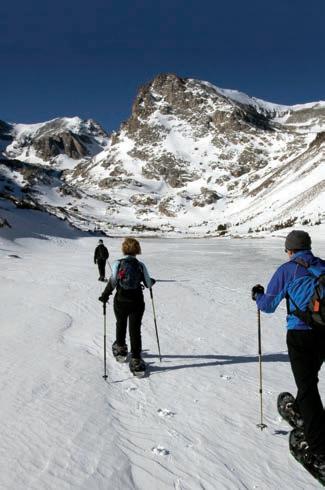

COLORADO MOUNTAIN CLUB
GUIDEBOOK
SNOWSHOE ROUTES
SECOND EDITION
ALAN APT
View of the 13,000-foot ridgeline above Chicago Creek. Alan Apt
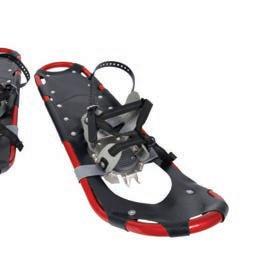
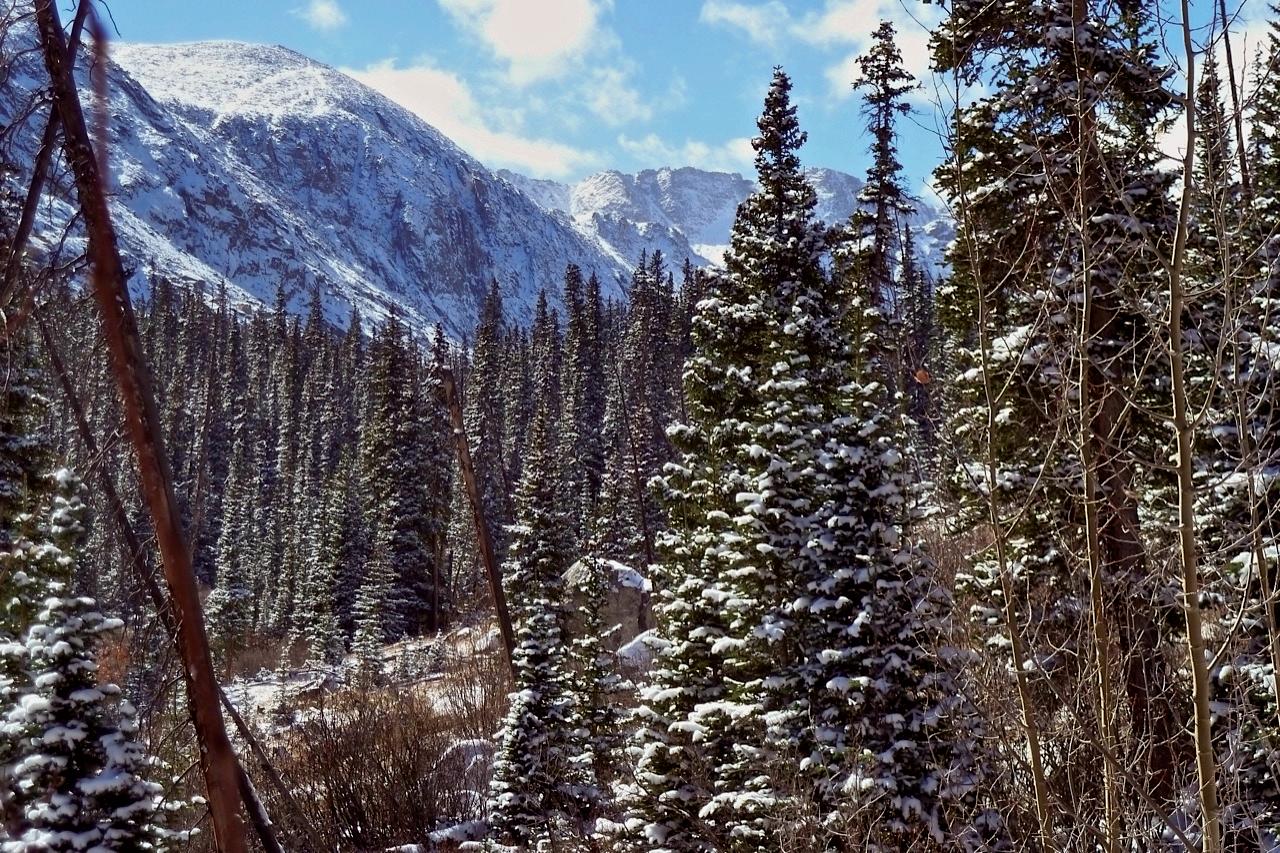
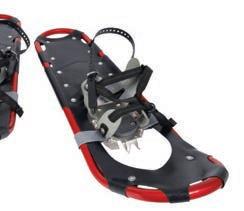
more rugged, as it climbs to 13,391 feet on Rogers Peak. e trails climbs to 11,500 feet before it begins to descend toward the Chicago Lakes at 11,400 feet. Berthoud Pass—Eastside Trails e former Berthoud Pass Ski Area has the elevation (11,300 feet) to make early season snow adventures worthwhile. e Eastside Trails o er great views and terrain that isn’t highly avalanche hazardous or steep. From Denver take I-70 west to the US 40 exit for Winter Park, and then drive 14 miles to the pass summit. e slopes are south of the restrooms. If you are skinning up on skis and want a rapid ascent, take the left/north edge of the slope next to the trees. You will be on the bottom of the former Powderline alpine ski trail. When you reach treeline, you can ski back down the same way, or edge over to the south for the Bonanza run. Both are blue (intermediate) di culty. If you want a mellower snowshoe ascent, go to the south end of the parking lot and head up the summer road. It switchbacks more slowly to treeline (11,700 feet), where you will see spectacular views. You can climb all the way to the top of Colorado Mines Peak (12,493 feet), which is 4 miles round trip. It is usually very windswept, and portions of the road could be snow free. You will have sweeping views of the Continental Divide as your reward. It is always a good idea to wear an avalanche beacon, and take a shovel and probes, in this kind of terrain. △






